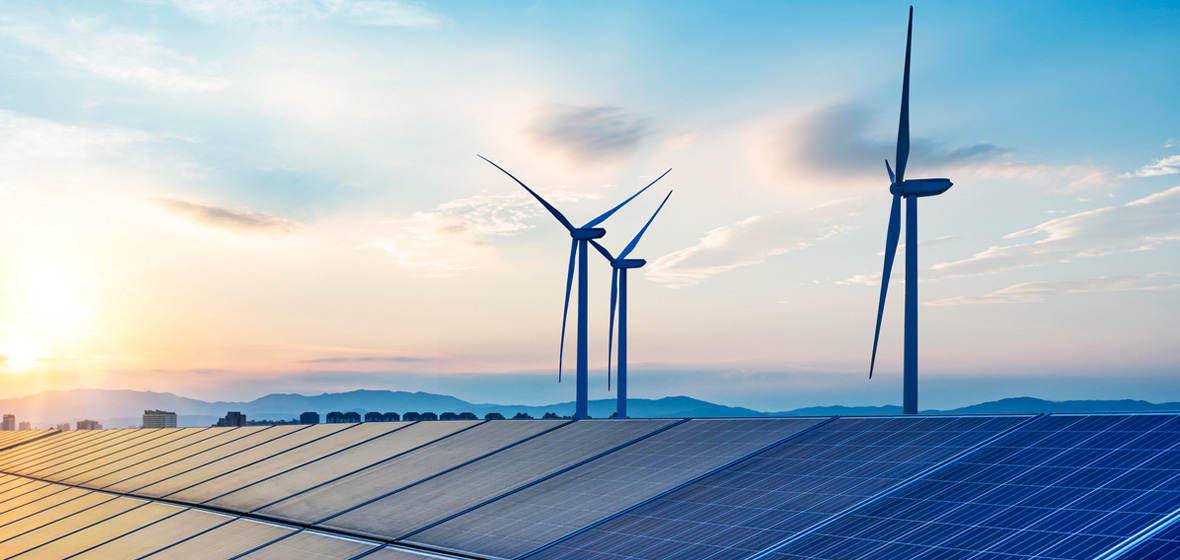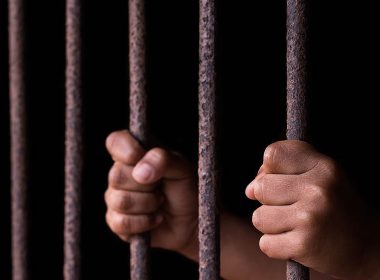With Australia, and NSW in particular, leading the charge in solar power uptake, there are many opportunities for legal professionals working in the area of renewable energy.
Australia is the global leader when it comes to solar power uptake. As of 31 January 2022, more than 3 million rooftop solar PV systems were installed country wide, representing 30 per cent of all Australian homes. The Australian Energy Market Operator estimates this will rise to 65 per cent of homes by 2050.
In contrast, in the US only 6 per cent of homes had solar panels installed by the end of 2022.
Renewable sources for the 207 terawatt hours of energy produced on Australia’s National Energy Market in 2022–23 included:
- wind (13 per cent)
- rooftop solar (10 per cent)
- hydro (7.6 per cent)
- utility scale solar (6.1 per cent).
For an insight into the role of the legal profession in the renewable energy industry, LSJ spoke to an energy law expert. Shalini Sree has been Director of ACT-based Elringtons Lawyers, based in Canberra and Queanbeyan, since 2017. The firm represents clients in the ACT, NSW and federal courts across the areas of litigation and dispute resolution, family law, property and commercial law, wills and estate planning.
Australia is abundant in solar irradiance and receives solar energy year round, Sree says, and the sunniest states in the country (Queensland, NSW and WA) are particularly appealing to investors.
In the zone of renewable energy
The burgeoning solar energy industry in NSW is built on an accumulation of factors, Sree notes, but foremost is the political momentum driving this.
The Albanese Government has set a 2030 emissions target and in efforts to make this happen the Government has, amongst other things, created a special corporation to channel $20bn into new transmission links that will accelerate the uptake of clear energy.
The NSW Government has established Renewable Energy Zones (REZs) as a means of better coordinating and encouraging new grid infrastructure, generation storage and system strength services in its identified zones. These REZs are the equivalent of modern-day power stations. They combine new renewable energy infrastructure, including generators (such as solar and wind farms), storage (such as batteries and pumped hydro), and high-voltage transmission infrastructure.
The Government is also establishing an Energy Corporation to coordinate and work with government, energy market bodies and industry.
Sree says, “This greatly assists renewable energy companies, as infrastructure like transmission lines is pivotal to the set-up of wind and solar farms.”

It also helps, Sree says, that NSW Land Registry Services has clarified its guidelines to acknowledge and accept solar farm leases as premises leases (“premises” being the solar panels themselves).
She explains: “Without such acknowledgement in the past, leases for solar farms were for the entire block of land, and so depending on the circumstances negotiations had to be about reservation of rights to the lessor. Where the lease related to part of a block of land, it would trigger the need for a plan of subdivision for lease purposes.”
Sree explains that, with the increasingly frequent and severe weather events such as drought and floods in regional NSW, agricultural landowners are understandably seeking alternative sources of income. The sources they seek are those that will provide them with a stable payment from land leases, either individually or in tandem with a group of local landowners.
In her earliest days with Elringtons Lawyers, Sree worked with groups of landowners in Queanbeyan, and supporting landowners from a legal perspective is still a strong element of her day-to-day work.
A happy accident
As a young law student in the UK, working with regional landowners in Australia certainly wasn’t what Sree predicted for her career, which began in international human rights law in the UK.
She graduated with a Bachelor of Laws with Honours from the UK, and a Master of Laws from the Australian National University. Her passion for international human rights law saw her working with Amnesty International in the UK, before she met and married her Australian husband and moved to Australia in 2009.
She refers to her current career as a “happy accident”, the result of landing a job with Elringtons in January 2013, where her initial focus was on property law.
Sree says, “I started specialising more and more in that area, which sparked everything. When people think of property law, they think of basic conveyancing – but as a whole, property law is so much broader.”
This was confirmed for her when she completed her specialist accreditation in property law through the Law Society of NSW in 2019.
“Wind farms were my initial interest,” she says. “I fell into it since I was mostly doing property and commercial law at the time, and I was working with a mentor at Elringtons who had a client who’d been approached by a wind farm company. We eventually acted for all the landowners in the wind farm project, and our provision of legal services in that area spread to other landowners by word of mouth.”
Sree adds, “Solar farms and wind farms are complementary to each other in the supply of renewable energy. The impacts on land by wind farms and by solar farms are different in that solar farms take up more land area; but the concepts are similar in terms of the infrastructure, connectivity and access issues.”
Sree spends around 30 per cent of her time travelling in regional NSW to meet with clients, and at the time of her interview with LSJ had just returned from nearly a month of travelling. It’s a part of the job she really enjoys, and she admits that she would pursue more time travelling regional NSW for work if not for having to juggle professional and family obligations.
Energy law is not entirely new, Sree says, since it is a combination of various areas of law. “Energy law spans a range of areas: primarily a sophisticated evolution of property law and commercial law responsive to the change in the energy paradigm.”
‘Energy law spans a range of areas: primarily a sophisticated evolution of property law and commercial law responsive to the change in the energy paradigm.’
Sree adds, “Energy law definitely deals with planning laws, because of the approvals required for construction of projects that depend on environmental planning and the assessment laws that are in place. There are also aspects of government law in terms of obtaining consent from local government, for example where [the work] involves council roads.”
Elringtons has done a lot of work with Queanbeyan council and surrounding councils, says Sree. Sree’s clients are predominantly landowners or landowner groups (around 80 per cent), with developers representing the remainder, and she relies on the renewable energy guidelines provided by the NSW Department of Planning, based upon the Environmental Planning and Assessment Act 1979 (NSW) (EPA Act).
Renewal energy legislation
Under State Environmental Planning Policy (State and Regional Development) 2011, electricity-generating works, including renewable energy proposals – both wind and solar farms – with a capital cost of more than $30 million (or $10 million in an environmentally sensitive area) are considered as State Significant Development under Part 4 of the EPA Act. Under State Environmental Planning Policy (Infrastructure) 2007, there are a range of assessment pathways for small-scale renewable energy proposals, which are tailored to the size, location and level of the environmental impact of the proposal.
The NSW Government introduced the Large-Scale Solar Energy Guideline in 2018. The aim was to provide clarity for the community, industry and regulators on the planning framework for the assessment and approval of state-significant solar energy projects. Following consultation in December 2021, the Guideline was updated in February 2022 to include advice on a range of assessment matters, including visual impacts and agricultural land use.
Sree says having those guidelines to spell out the impacts of the solar farm development makes it simpler for landowner clients to understand the potential impacts of solar farm developments on their land. “The guidelines,” she explains, “provide clarity for developer clients to anticipate what is required to be put together for their application for project approval. As for landowner clients, it helps them understand the various impacts of solar farm developments on their land.”
A changing landscape
“The changing landscape in renewable energy in Australia means that we’re seeing more and more international companies and some very big, notable ones,” says Sree.
“It is evident from time to time there is a want of understanding of the legal process and relevant discipline. The esoteric nature of solar farm developments provokes the need for liability issues to be considered in detail, and the need for sufficient cover.”
“The esoteric nature of solar farm developments provokes the need for liability issues to be considered in detail.”
Because Sree works primarily with landowners rather than companies, she’s noticed there’s “a general lack of appreciation from some developers of some risk elements such as material fire risks on agricultural land.”
In NSW, most of the regional land is bushfire prone.
“An issue that is typically raised,” Sree says, “is insurance cover taken to give landowners assurance against fire risk, and we’re noticing that the $10 to $20 million cover is typical, but projects are becoming larger and larger so those insurance covers need to be revised to keep up with the risk elements from the projects.”
NSW a leader in Australia solar energy
Sree suggests that, rather than NSW necessarily providing more suitable land or favourable legislation, it is the political environment and the investment in infrastructures that is giving the state a head start.
She says, “From a developer’s perspective, the recent political change to state and federal government means there’s a much greater buzz around the NSW Renewable Energy Zones … the energy hubs have definitely drawn their interest.”
In May the first competitive tender under the NSW Electricity Infrastructure Roadmap aimed to secure clean power at a record price to replace ageing coal power stations. NSW depends on ageing coal power generators for about 70 per cent of its electricity generation.
The projects that won the tender process include ACEN Australia’s proposed 400MW Stubbo solar farm, to be built in the Central West Orana REZ, and ACEN’s 720MW New England solar farm.
No blanket agreements
Sree says, “A lot of NSW land is drought-stricken, so landowners are cognisant that when they’ve had to work with significant drought or rain, the income from renewable energy helps them ride out those peaks and troughs. Longer and more intense droughts and floods are definitely influencing landowners to see renewable energy developments as a reliable income.”
‘Longer and more intense droughts and floods are definitely influencing landowners to see renewable energy developments as a reliable income.’
When it comes to negotiating contracts, Sree says, there is no standard agreement that can be applied blanket-style to all negotiations. Each is dependent on the nature of the land, the number of clients acting as a group, the size of the solar farm development, and what infrastructure and access is required. Along with fire risks being a sticky point of discussions, so is the risk of contamination, which naturally arises when there are more people entering land and unwittingly bringing diseases or pests onto sensitive agricultural land.
“Biosecurity is equally as vital as other risk elements concerns in negotiations,” Sree confirms. “Contaminants to agricultural land are a big issue that come up in negotiations, so strict and clear codes of conduct must be established in relation to how visitors and workers in trucks drive through land and spread weed or contaminants from one block of land to another. So, rules concerning not going across paddocks and sticking to formed roads are often part of negotiations.”
Leasing
Sree says that generally leases span either 25 or 30 years, with an option for a further 25 or 30 years.
The commercial aspect of law comes into play in these negotiations, she says.
“There’s no real regulation over rent being charged in cases of leases, but generally there’s a per annum rental sum and that depends on a percentage of the output that’s being generated, or a dollar value based on the size of the project. In solar farms, sometimes you’ll find circumstances where developers purchase land from the landowner and, of course, that’s a one-off payment for the sale of that land. Leasing tends to be much more common, and especially now that the landowner reserves right for agricultural use, that makes it much more attractive to landowners.”
While Sree demurs about sharing exact figures, she says that rents are typically in the range of hundreds of thousands of dollars for landowners, which is enough to buoy most through the slower periods of agricultural income.
Part of a long-term clean energy plan
The New York Times reported on Australia’s world-leading solar use in 2020, praising the simplified permit process for homeowners seeking to install rooftop solar panels and the “streamlined building codes” that encourage homeowners to limit their energy use.
Unlike many nations where minimum energy requirements are voluntary, the Australian government has set mandatory minimum energy requirements for efficient energy use.
The NSW Government has outlined these in its Sustainable Buildings State Environmental Planning Policy, with amendments to commence on 1 October 2023, including increasing the thermal performance standard from an average of 5.5–6 star to a 7 star NatHERS (Nationwide House Energy Rating Scheme) rating.
Ultimately, the government has a formal commitment to reducing carbon emissions by 43 per cent by 2030 under the Paris Agreement. This was enshrined in law, along with a net zero target by 2050, with the Climate Change Act 2022 (Cth). To that end, the 2022–23 Budget committed funding of $45.8 million over six years towards climate change mitigation, including steps to support Pacific neighbours in their own goals towards net zero. The most recent budget, as reported on by LSJ, revealed the National Net Zero Authority as the leadership guiding Australia’s net zero transformation.
The Net Zero Australia report, a partnership between the University of Melbourne, the University of Queensland, Princeton University’s Andlinger Center for Energy and the Environment, as well as management consultancy Nous Group, modelled how Australia might meet its 2050 climate target. The final report, released in April 2023, warned that Australia’s goal of net zero carbon emissions by 2050 is at risk, with the pipeline of large-scale solar and onshore wind projects likely to fall short of the required build rate. It calls for faster, broader and more innovative decarbonisation efforts to drastically cut emissions, including the eradication of nuclear power.
Options for the profession
Sree offers some advice for lawyers wanting to work in the solar farm space. For those wanting to work with developers, she says, “It’s definitely helpful having expertise in property and commercial law, with a good understanding of the environmental planning assessment acts and regulation. Most states have similar guidelines.”
Lawyers interested in representing landowners, she says, need “a good understanding of property and commercial law, and knowledge of the Biosecurity Act, because sometimes projects can come into conflict with general biodiversity and conservation activities.”




